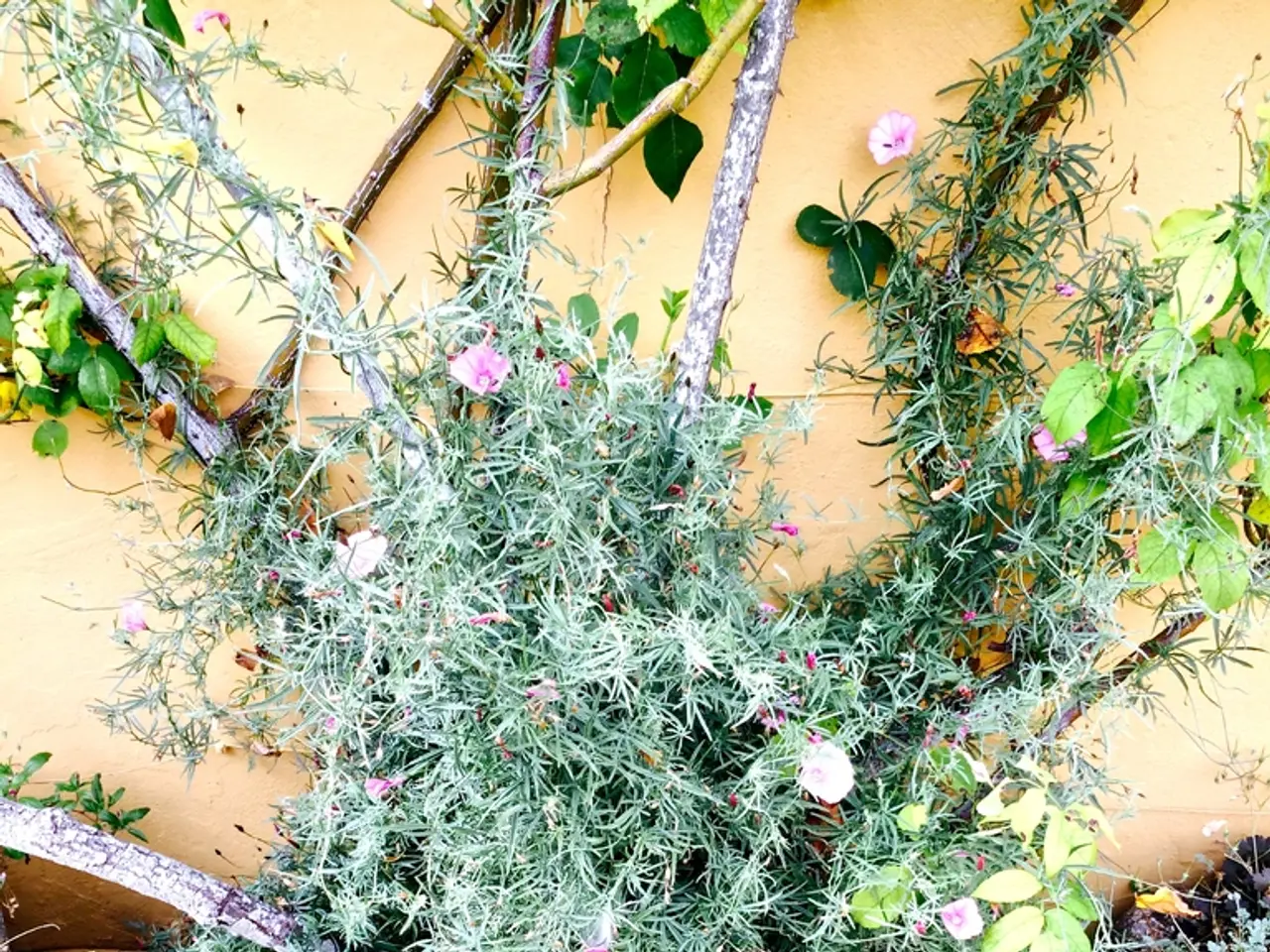Top 12 Outdoor Herbarium Essentials for Crafting Stunning Plant Arrangements that Arouse Awe
In the world of botany and natural history, a well-maintained herbarium collection is a treasure trove of valuable plant specimens. To ensure the preservation of these precious samples, a variety of tools and supplies are essential.
The Core Toolkit
At the heart of every professional herbarium lies a collection of indispensable tools. A plant press is a device used to flatten and dry plant specimens properly. Archival-quality mounting paste and acid-free paper, used to affix dried specimens, are crucial for long-term preservation. Drying racks or ovens help ensure samples dry efficiently without molding.
Magnification tools, such as loupes or microscopes, are essential for detailed examination and identification. Forceps and fine tools are necessary for delicate handling of specimens. Museum-grade sealed cabinets or folders protect collections from light, dust, pests, and humidity fluctuations.
Documentation and Digital Tools
Accurate recording of specimen data is vital for research purposes. Notebooks, labels, and field guides or manuals are essential for this task. In the modern age, digital tools like devices for digitization and data management have become essential for curatorial work.
Field Equipment
For specimen collection and initial identification, additional field equipment may include hand lenses, clipboards, and botanical manuals. Flower pressing kits offer DIY-level solutions, but professional herbarium work favors archival-quality materials to preserve specimen integrity over decades or centuries.
Advanced Techniques and Specialised Tools
For more advanced work, tools like pH-neutral glue strips for attaching small plant parts, digital calipers for precise measurements of small plant parts, and flexible measuring tape for larger specimens, are invaluable. PVA glue offers strong permanent adhesion, while conservation-grade tape is ideal for securing larger specimens.
Diatomaceous earth creates natural barriers against crawling pests, and portable press systems allow immediate specimen preservation in the field. Acid-free storage folders offer additional protection during handling, and genus covers help organize related specimens together.
Photography and Transportation
A portable light box or photography tent controls lighting conditions when photographing pressed specimens. A portable 10x hand lens is essential for quick field observations, and clear polyester sheets (Mylar) provide visibility while preventing damage. Archival sleeves shield specimens from dust and insects.
A high-resolution digital camera with macro lens capabilities ensures detailed specimen documentation. University Products herbarium boxes with metal edges and acid-free construction buffered with 3% calcium carbonate are used for transporting specimens. Silica gel packets control moisture that attracts pests.
Practical Considerations
A sturdy tripod and remote shutter release help capture sharp, detailed images of small plant features. A portable press system helps prevent wilting and maintain specimen quality until transfer to a permanent press station. A sturdy ruler with both metric and imperial units is needed for measuring.
In conclusion, for a professional herbarium, plant presses, archival mounting supplies, drying racks/ovens, magnification tools, precise handling instruments, durable documentation materials, and museum-grade storage cabinets form the core toolkit necessary for creating and maintaining a high-quality, long-lasting collection. Additional tools cater to specific needs and advanced techniques, ensuring the preservation and study of these valuable specimens for generations to come.
[1] MSU Herbarium model combines both dissecting and compound microscopes with digital camera attachments. [2] pH-neutral glue strips are perfect for attaching small plant parts. [3] Digital calipers are used for precise measurements of small plant parts. [4] Flexible measuring tape is used for larger specimens. [5] PVA glue offers strong permanent adhesion. [6] Conservation-grade tape is ideal for securing larger specimens. [7] Diatomaceous earth creates natural barriers against crawling pests. [8] Portable press system allows immediate specimen preservation in the field. [9] Acid-free storage folders offer additional protection during handling. [10] Genus covers help organize related specimens together. [11] MUYIZI Mesh Bag for holding beach shells can be used for field collection. [12] Portable light box or photography tent controls lighting conditions when photographing pressed specimens. [13] A portable 10x hand lens is essential for quick field observations. [14] Clear polyester sheets (Mylar) provide visibility while preventing damage. [15] Archival sleeves shield specimens from dust and insects. [16] A high-resolution digital camera with macro lens capabilities ensures detailed specimen documentation. [17] University Products herbarium boxes with metal edges and acid-free construction buffered with 3% calcium carbonate are used for transporting specimens. [18] Silica gel packets control moisture that attracts pests. [19] A sturdy tripod and remote shutter release help capture sharp, detailed images of small plant features. [20] Sturdy ruler with both metric and imperial units is needed for measuring. [21] A portable press system helps prevent wilting and maintain specimen quality until transfer to a permanent press station.
- The world of herbarium nicht only requires traditional tools like plant presses and archival-quality mounting supplies, but also modern technology such as high-resolution digital cameras with macro lens capabilities for detailed specimen documentation.
- In addition to fashion-and-beauty products, a well-equipped home may also include smart-home-devices, gadgets, and technology that cater to a sophisticated lifestyle, enhancing daily routines and home-and-garden management.
- For more advanced herbarium work, various specialized tools are invaluable, such as pH-neutral glue strips for attaching small plant parts, digital calipers for precise measurements, and flexible measuring tape for larger specimens, all of which contribute to a well-maintained herbarium collection.



